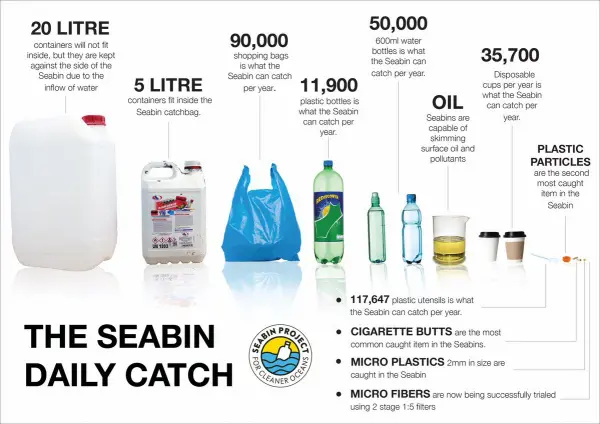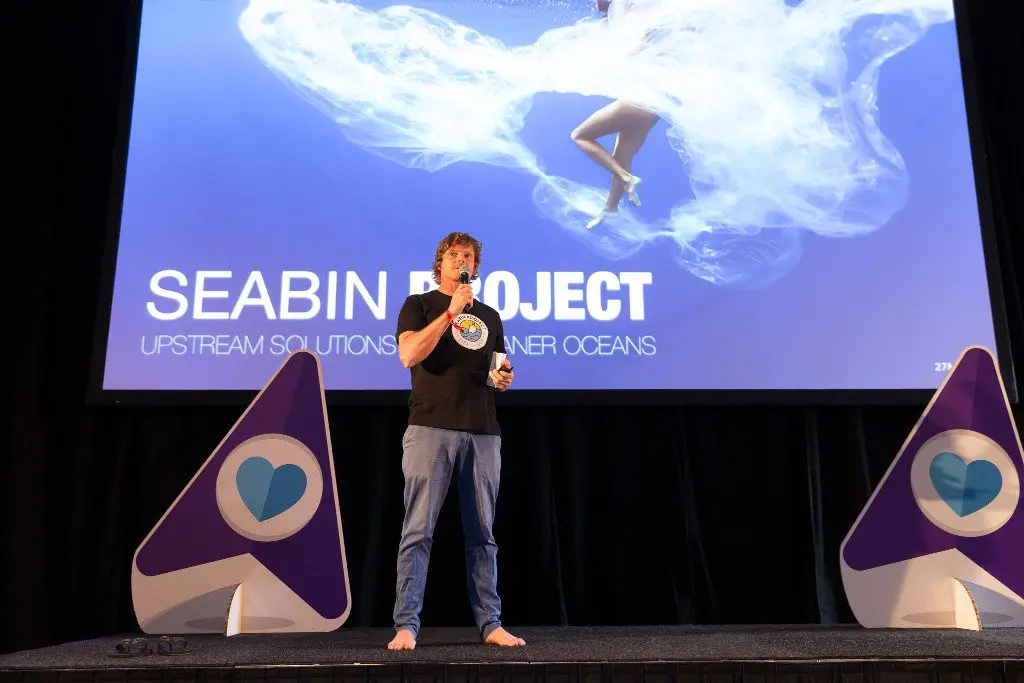Australia – 11 900 plastic bottles. That’s how many the Seabin can ‘catch’ per year. ‘If we have waste bins on land, then why don’t we have any on the water?’ wondered Australian boat building-surfing duo Andrew Turton and Pete Ceglinski. So they got to work on product design, launched a crowdfunding campaign and, since 2016, have installed several plastic-eating bins in Bermuda, the USA, Spain, Finland, Montenegro and France.
The V5 Seabin is a floating debris interception device designed to be installed in bodies of water such as marinas, yacht clubs and ports.
The special bin can capture around 1.5 kg of floating debris every day – including micro plastics as small as 2 mm – depending on the weather and debris volumes.
By strategically positioning the bin near plastic hotspots, winds and currents push the debris directly to the Seabin, explain Turton and Ceglinski.
Essentially, the unit works by pumping water from the surface, which then passes through a catch bag inside the Seabin. The submersible water pump is capable of displacing 25 000 litres per hour while the Seabin can store up to 20 kg.
Prerequisites for success are said to be a ‘calm’ environment and availability of local waste collection services.
‘Between 15 and 50 billion pieces of micro plastics and 1.4 trillion micro fibre particles, weighing from 93 000 to 236 000 tonnes, can be found in the marine environment and pretty much everywhere you look,’ the young entrepreneurs note.
They are currently in talks to have the Seabin technology installed in all 64 of the Safe Harbor marinas across the USA.
Last summer, the Seabin team was one of 10 finalists to secure funding from a Booking.com accelerator programme, receiving Euro 350 000 (US$ 420 000) plus a people’s choice award of Euro 10 000 (US$ 12 000).

Don't hesitate to contact us to share your input and ideas. Subscribe to the magazine or (free) newsletter.



